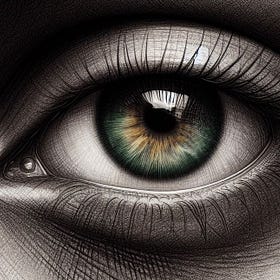Around 4500 years ago, ancient Egyptians came up with the concept that an image—a hieroglyph—didn’t have to represent the thing that was drawn.
Instead, someone (or several someones, maybe) noticed that several words sounded similar when spoken aloud, and—maybe more importantly—they noticed that words were broken up into syllables. Those syllables, in turn, were the same in lots of different words.
They realized that you could take a symbol that had previously only represented the image itself, and have it represent part of the sound of the word instead. I wrote a bit about how they did this here:
Writing Sound
Is there a better way to communicate a simple message than by way of an artistic representation of whatever it is you want to convey? If you look at a realistic drawing of an eye, you’ll know that the image stands for an eye, like so: But what if you’re not so great at sketching realistic renderings of things? Or, what if you don’t want to spend an hour working on something that represents one thing?
These chunks of sound were called phonemes. What a difference they made in terms of copying and remembering the written language! Instead of having to come up with a symbol for every single word they needed to write down, scholars and priests would instead put phonemes together, so the word that was written would be very close to the sound. An educated scholar could then interpret this and re…
Keep reading with a 7-day free trial
Subscribe to Goatfury Writes to keep reading this post and get 7 days of free access to the full post archives.




